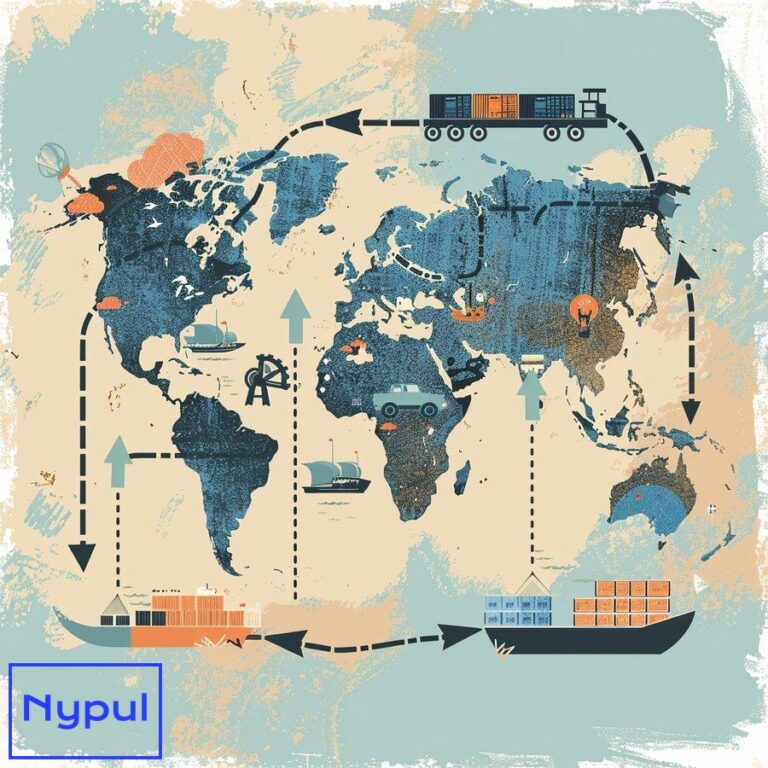What Is the Customs Trade Partnership Against Terrorism Act
What is the Customs Trade Partnership Against Terrorism (CTPAT) Act?
The Customs Trade Partnership Against Terrorism (CTPAT) is a voluntary public-private sector partnership program led by U.S. Customs and Border Protection (CBP). Established in November 2001 as a direct response to the September 11 terrorist attacks, CTPAT aims to strengthen international supply chains and improve U.S. border security.
CTPAT is not technically an “act” in the legislative sense, but rather a program implemented by CBP under existing statutory authority. The legal foundation for CTPAT comes from the Security and Accountability for Every (SAFE) Port Act of 2006, which codified the program into law.
The core mission of CTPAT is to partner with members of the trade community to protect the U.S. and global supply chains from terrorism. By fostering cooperative relationships between the government and private sector, CTPAT works to:
Secure the flow of goods: CTPAT members implement security measures throughout their supply chains to prevent the smuggling of weapons, drugs, and other contraband.
Identify and address security gaps: Through risk assessments and security profiles, participants pinpoint vulnerabilities in their operations and take corrective actions.
Enhance border security: By vetting and certifying trusted traders, CBP can focus its resources on higher-risk shipments and entities.
Facilitate legitimate trade: CTPAT-certified companies enjoy expedited processing at U.S. borders, reducing delays and costs associated with international trade.
CTPAT operates on a tiered system, with three levels of certification:
Tier 1 (Certified): The basic level for companies that meet minimum security criteria.
Tier 2 (Validated): For members who have undergone on-site validation by CBP and demonstrate a higher level of compliance.
Tier 3 (Exceeds): The highest level, reserved for companies that exceed minimum security criteria and demonstrate best practices.
As of 2024, CTPAT has over 11,400 certified partners, representing a significant portion of U.S. imports. These partners span various sectors of the supply chain, including:
- U.S. importers and exporters
- Customs brokers
- Consolidators
- Port and terminal operators
- Transportation providers (air, sea, rail, and highway carriers)
- Foreign manufacturers
By bringing together stakeholders from across the global supply chain, CTPAT creates a comprehensive approach to cargo security that extends beyond U.S. borders. This collaborative model has inspired similar programs in other countries and serves as a benchmark for international supply chain security initiatives.
How does CTPAT work to enhance supply chain security?
CTPAT enhances supply chain security through a multi-faceted approach that combines risk assessment, security implementation, validation, and continuous improvement. The program’s effectiveness stems from its ability to engage various stakeholders in the supply chain and create a culture of security awareness.
Risk Assessment and Security Profiles

CTPAT members begin by conducting comprehensive risk assessments of their supply chains. This process involves:
Mapping cargo flow: Companies identify all touchpoints in their supply chain, from origin to destination.
Threat assessment: Participants evaluate potential security risks at each stage of the supply chain.
Vulnerability analysis: Weaknesses in existing security measures are identified and prioritized.
Action planning: Based on the assessment, companies develop strategies to address vulnerabilities.
Documentation: The entire risk assessment process is documented and regularly updated.
Using this information, CTPAT members create detailed security profiles that outline their specific security measures and procedures. These profiles serve as a blueprint for implementing and maintaining robust security practices.
Implementation of Security Measures
CTPAT provides guidelines for security measures across various aspects of the supply chain. Key areas include:
Physical Security:
– Perimeter fencing and gates
– Access control systems
– Lighting and surveillance cameras
– Secure storage areas for cargo and containers
Personnel Security:
– Background checks for employees
– Security awareness training
– Identification systems
– Procedures for termination and changing access credentials
Procedural Security:
– Documented processes for handling cargo
– Seal verification procedures
– Reporting mechanisms for security incidents
– Internal audits and accountability measures
Information Technology Security:
– Password policies and access controls
– Data backup and recovery procedures
– Cybersecurity measures to protect sensitive information
– Tracking systems for cargo and conveyances
Business Partner Requirements:
– Vetting procedures for suppliers and service providers
– Contractual security requirements for partners
– Monitoring and auditing of partner compliance
Conveyance Security:
– Inspection procedures for containers and trailers
– Secure parking and storage areas for vehicles
– GPS tracking for high-value or high-risk shipments
– Protocols for reporting and addressing anomalies
Validation Process
CBP conducts on-site validations to verify that CTPAT members are implementing their security profiles effectively. This process includes:
Document review: Examination of security policies, procedures, and records.
Physical inspection: On-site assessment of security measures and practices.
Employee interviews: Discussions with staff to gauge security awareness and adherence to protocols.
Corrective action plans: Identification of areas for improvement and development of action plans.
Continuous Improvement and Information Sharing
CTPAT fosters ongoing enhancement of supply chain security through:
Annual security assessments: Members conduct yearly reviews of their security measures and update their profiles accordingly.
Best practice sharing: CBP facilitates the exchange of effective security strategies among CTPAT participants.
Training and resources: The program provides access to security training materials and expert guidance.
Threat information: CBP shares relevant security threat information with CTPAT members to help them adapt their measures.
Mutual Recognition Arrangements: CTPAT works with foreign customs administrations to align security standards and recognize each other’s trusted trader programs.
By combining these elements, CTPAT creates a comprehensive framework for supply chain security. The program’s collaborative nature encourages a shared responsibility for security among all participants in the global trade ecosystem. This approach not only enhances the security of individual supply chains but also contributes to the overall resilience of international trade against terrorism and other threats.
Who is eligible for CTPAT certification?
CTPAT certification is available to a wide range of entities involved in the international supply chain. Eligibility is determined based on the company’s role in the supply chain, its operational history, and its ability to meet the program’s security criteria. Here’s a detailed breakdown of who can apply for CTPAT certification:
U.S. Importers
Eligibility criteria:
– Active U.S. importer of record number
– Minimum of 12 months of import activity
– Valid continuous customs bond
– Designated company officer responsible for CTPAT
U.S. Exporters
Eligibility criteria:
– Registered U.S. business entity
– Minimum of 12 months of export activity
– Designated company officer responsible for CTPAT
– Compliant with U.S. export regulations
U.S. Customs Brokers
Eligibility criteria:
– Valid customs broker license
– Minimum of 12 months of brokerage activity
– Designated company officer responsible for CTPAT
Highway Carriers (U.S., Canada, Mexico)
Eligibility criteria:
– Valid operating authority
– Minimum of 12 months of cross-border activity
– Designated company officer responsible for CTPAT
Rail, Sea, and Air Carriers
Eligibility criteria:
– Bonded by CBP
– Minimum of 12 months of international shipping activity
– Designated company officer responsible for CTPAT
Marine Port Authority and Terminal Operators
Eligibility criteria:
– Operating in the U.S.
– Handling cargo subject to CBP review
– Designated company officer responsible for CTPAT
Foreign Manufacturers
Eligibility criteria:
– Exporting to the U.S.
– Minimum of 12 months of shipping activity to the U.S.
– Designated company officer responsible for CTPAT
Third-Party Logistics Providers (3PLs)
Eligibility criteria:
– U.S. business entity
– Handling international cargo
– Minimum of 12 months of 3PL activity
– Designated company officer responsible for CTPAT
Consolidators (Air Freight, Ocean Transport, NVOCC)
Eligibility criteria:
– U.S. business entity
– Bonded by CBP
– Minimum of 12 months of consolidation activity
– Designated company officer responsible for CTPAT
Mexican Long Haul Carriers
Eligibility criteria:
– Registered with Mexican tax authority (SAT)
– Minimum of 12 months of cross-border activity
– Designated company officer responsible for CTPAT
Eligibility Factors for All Applicants
In addition to the specific criteria for each entity type, all CTPAT applicants must meet the following general requirements:
Legal compliance: No history of smuggling, trade violations, or other criminal activities.
Financial solvency: Ability to maintain and implement required security measures.
Supply chain security commitment: Willingness to implement and maintain CTPAT security criteria.
Business partner screening: Procedures in place to vet and monitor business partners.
Risk assessment capability: Ability to conduct and document supply chain risk assessments.
Security profile maintenance: Commitment to creating and updating a detailed security profile.
Ineligible Entities
Certain types of businesses are not eligible for CTPAT certification, including:
- Domestic-only transportation providers
- Companies without a physical presence in the U.S. or Canada (except for foreign manufacturers)
- Individuals or sole proprietorships
- Companies with less than 12 months of operational history
It’s important to note that eligibility does not guarantee acceptance into the CTPAT program. Applicants must still undergo a vetting process and demonstrate their ability to meet and maintain the program’s security standards.
For companies that are not directly eligible for CTPAT, there may be opportunities to participate indirectly by becoming a trusted partner of a CTPAT-certified entity. This can involve implementing compatible security measures and undergoing security assessments as required by the certified partner.
By establishing clear eligibility criteria, CTPAT ensures that participants have the necessary experience, resources, and commitment to contribute effectively to supply chain security. This selective approach helps maintain the integrity and effectiveness of the program in enhancing global trade security.
What are the key requirements for CTPAT compliance?

CTPAT compliance is built on a foundation of comprehensive security measures that address various aspects of the supply chain. The program’s requirements are designed to create a robust security framework that can adapt to evolving threats. Here are the key requirements for CTPAT compliance:
Security Vision and Responsibility
Leadership commitment: Senior management must demonstrate active involvement in security initiatives.
Security policy: A documented and communicated security policy that outlines the company’s commitment to supply chain security.
Security personnel: Designation of a qualified individual responsible for CTPAT compliance and security measures.
Risk Assessment
Documented process: A formal, documented approach to identifying and addressing security risks.
Regular updates: Annual (at minimum) reviews and updates of the risk assessment.
Scope: Comprehensive assessment covering all aspects of the supply chain, including cybersecurity threats.
Business Partner Security
Vetting process: Procedures for screening and selecting business partners, carriers, and service providers.
Written guidelines: Documented security expectations for business partners.
Monitoring: Regular evaluation of partners’ adherence to security standards.
Cybersecurity
IT policies: Comprehensive information technology policies and procedures.
Access controls: Measures to prevent unauthorized access to data and systems.
Employee training: Regular cybersecurity awareness training for all staff.
Incident response: Procedures for detecting, reporting, and addressing cybersecurity incidents.
Conveyance and Seal Security
Inspection procedures: Documented processes for inspecting containers, trailers, and other conveyances.
Seal controls: Procedures for proper seal application, verification, and reporting of anomalies.
Tracking: Systems for monitoring the location and status of shipments and conveyances.
Procedural Security
Documentation processes: Procedures for ensuring the accuracy and integrity of all import/export documentation.
Cargo discrepancy reporting: Systems for identifying and reporting cargo discrepancies or anomalies.
Cargo release: Procedures to ensure that the release of cargo is authorized by customs.
Agricultural security: Measures to prevent pest contamination and comply with agricultural regulations.
Physical Security
Facility security: Fencing, gates, access controls, and other physical barriers to prevent unauthorized entry.
Lighting and CCTV: Adequate lighting and video surveillance of facilities and cargo handling areas.
Locking devices: Secure locks and key controls for all storage areas and access points.
Alarm systems: Monitored alarm systems for detecting unauthorized access.
Personnel Security
Pre-employment screening: Background checks and verification of application information for new hires.
Termination procedures: Processes for removing access and credentials for terminated employees.
Training and awareness: Regular security training for all employees, including CTPAT awareness.
Education and Training
Security training program: Comprehensive training covering all aspects of supply chain security.
Threat awareness: Education on identifying and reporting security threats and suspicious activities.
Documentation: Records of all security training conducted and employee participation.
Trade Compliance
Classification accuracy: Procedures to ensure proper classification of goods for customs purposes.
Valuation: Systems to ensure accurate valuation of goods for duty assessment.
Free trade agreement compliance: Processes for verifying and documenting eligibility for preferential trade programs.
Export compliance: Measures to ensure compliance with export control regulations.
Continuous Improvement
Internal audits: Regular self-assessments of security measures and CTPAT compliance.
Corrective actions: Processes for addressing identified security gaps or non-conformities.
Best practice implementation: Ongoing efforts to adopt and implement industry best practices in security.
Documentation and Record Keeping
Security manual: A comprehensive document detailing all security policies and procedures.
Incident logs: Records of all security incidents, investigations, and corrective actions.
Training records: Documentation of all security-related training and participant information.
Audit trails: Maintenance of records to demonstrate consistent application of security measures.
To illustrate the interconnected nature of these requirements, consider the following table showing how different CTPAT compliance areas relate to specific supply chain activities:
| Supply Chain Activity | Primary CTPAT Requirement Areas |
|---|---|
| Supplier Management | Business Partner Security, Risk Assessment |
| Cargo Handling | Conveyance Security, Procedural Security, Physical Security |
| Data Management | Cybersecurity, Trade Compliance, Documentation |
| Employee Management | Personnel Security, Education and Training |
| Facility Operations | Physical Security, Procedural Security |
| Transportation | Conveyance Security, Seal Security, Tracking |
Meeting these requirements demands a holistic approach to security that integrates various aspects of a company’s operations. CTPAT compliance is not a one-time achievement but an ongoing process of implementation, monitoring, and improvement. Companies must be prepared to adapt their security measures as new threats emerge and as CBP updates its guidelines.
It’s important to note that while these requirements apply to all CTPAT participants, the specific implementation may vary based on the company’s role in the supply chain, size, and risk profile. CBP recognizes that a one-size-fits-all approach is not practical, and works with participants to ensure that their security measures are appropriate and effective for their particular circumstances.
How can businesses apply for CTPAT certification?
Applying for CTPAT certification is a structured process that requires careful preparation and commitment from the applicant company. The application process is designed to ensure that potential members understand the program’s requirements and are prepared to implement robust security measures. Here’s a step-by-step guide on how businesses can apply for CTPAT certification:
Step 1: Determine Eligibility
Before beginning the application process, companies must confirm their eligibility for CTPAT. Review the eligibility criteria for your specific business type as outlined in the “Who is eligible for CTPAT certification?” section.
Step 2: Prepare for Application
Conduct internal assessment: Evaluate your current security measures against CTPAT requirements.
Designate a CTPAT point of contact: Appoint a qualified individual to oversee the CTPAT application and compliance process.
Gather necessary information: Collect company details, import/export data, and security documentation.
Step 3: Create a CTPAT Portal Account
Access the CTPAT Portal: Visit the official CBP website to access the CTPAT Portal.
Register for an account: Create a new user account in the CTPAT Portal system.
Verify account: Complete the email verification process to activate your account.
Step 4: Submit the Initial Application
Complete company profile: Enter basic company information, including business type and contact details.
AnswerStep 4: Submit the Initial Application (continued)**
Complete company profile: Enter basic company information, including business type and contact details.
Answer eligibility questions: Provide responses to specific questions regarding your company’s operations, security measures, and compliance history.
Upload supporting documentation: Include relevant documents that demonstrate your company’s commitment to security, such as existing security policies, risk assessments, and employee training records.
Review and submit: Carefully review all entered information and documentation for accuracy before submitting the application.
Step 5: Await CBP Review
After submission, CBP will review the application. This process may take several weeks. During this time:
- Be prepared for follow-up questions: CBP may reach out for additional information or clarification regarding your application.
- Maintain open communication: Respond promptly to any inquiries from CBP to facilitate the review process.
Step 6: On-Site Validation
If your application is approved, CBP will schedule an on-site validation visit to assess your security measures. This step involves:
- Preparation for the visit: Ensure that all security protocols are in place and that staff members are aware of the validation process.
- Documentation review: CBP will examine your security policies, procedures, and records during the visit.
- Physical inspection: Inspectors will assess your facility’s physical security measures and operational practices.
Following the validation visit, CBP will provide feedback and may require corrective actions if any deficiencies are identified.
Step 7: Receive CTPAT Certification
Upon successful validation, your company will receive CTPAT certification. This certification is valid for three years, during which you must maintain compliance with CTPAT requirements.
-
Celebrate your achievement: Certification demonstrates your commitment to supply chain security and can enhance your reputation in the industry.
-
Promote your status: Use your CTPAT certification in marketing materials and communications to highlight your dedication to security.
What benefits does CTPAT certification offer to participants?
CTPAT certification provides numerous benefits that extend beyond mere compliance with security requirements. These advantages can significantly impact a company’s operations, reputation, and bottom line. Here’s a detailed exploration of the key benefits associated with CTPAT certification:
Enhanced Security
-
Improved risk management: By implementing CTPAT’s security measures, companies can better identify and mitigate risks within their supply chains.
-
Proactive threat detection: Regular assessments and training foster a culture of vigilance among employees, leading to quicker identification of potential threats.
Expedited Customs Processing
-
Reduced inspection rates: CTPAT-certified companies typically experience fewer inspections by CBP, allowing for faster cargo clearance at U.S. borders.
-
Priority processing: Certified members receive priority treatment during customs processing, which can significantly reduce delays in shipments.
Cost Savings
-
Lower operational costs: Expedited processing leads to reduced storage fees and fewer delays in delivery schedules.
-
Insurance premium reductions: Enhanced security measures may result in lower insurance premiums due to decreased risk exposure.
Global Trade Facilitation
-
Access to international partnerships: CTPAT’s mutual recognition arrangements with other countries allow certified companies to benefit from similar trusted trader programs abroad.
-
Competitive advantage in global markets: Being recognized as a secure trading partner enhances credibility with international customers and suppliers.
Increased Customer Confidence
-
Demonstrated commitment to security: Certification signals to customers that a company prioritizes supply chain security, fostering trust in business relationships.
-
Positive brand image: Companies can leverage their CTPAT status in marketing efforts to differentiate themselves from competitors.
Networking Opportunities
-
Access to industry best practices: CTPAT provides a platform for sharing insights on security measures among certified partners.
-
Participation in training sessions and workshops: Members can engage in training opportunities that enhance their understanding of supply chain security.
How does CTPAT impact global trade and international security standards?
CTPAT plays a pivotal role in shaping global trade practices and enhancing international security standards. Its influence extends beyond U.S. borders, affecting how countries collaborate on trade security initiatives. Here’s an analysis of its impact:
Strengthening International Collaboration
CTPAT encourages cooperation among nations by establishing mutual recognition agreements (MRAs) with foreign customs administrations. These agreements facilitate:
-
Harmonized security standards: Countries align their trusted trader programs with CTPAT guidelines, promoting consistency in supply chain security practices globally.
-
Streamlined customs processes: MRAs enable faster clearance of goods between participating countries, reducing delays in international trade.
Setting Industry Standards
CTPAT serves as a model for other countries developing their own trusted trader programs. Its comprehensive approach to supply chain security has influenced:
-
Development of similar programs worldwide: Countries like Canada (Partners in Protection), Mexico (New Alliance Program), and the European Union (Authorized Economic Operator) have adopted principles similar to those found in CTPAT.
-
Establishment of best practices across industries: The program’s guidelines encourage companies worldwide to adopt robust security measures that protect against threats.
What challenges do companies face in obtaining and maintaining CTPAT certification?
While CTPAT certification offers significant advantages, companies may encounter several challenges during the application process and while maintaining compliance. Understanding these challenges can help businesses prepare effectively. Key challenges include:

Resource Allocation
-
Financial investment required for compliance efforts, such as upgrading facilities or implementing new technologies.
-
Staffing needs for training programs, risk assessments, and ongoing monitoring of compliance efforts.
Complexity of Requirements
-
Navigating extensive documentation requirements, which can be overwhelming for smaller companies or those without dedicated compliance teams.
-
Understanding evolving guidelines, as CBP periodically updates its requirements based on emerging threats or best practices.
Internal Resistance
-
Cultural shifts required within organizations, particularly if employees are not accustomed to rigorous security protocols.
-
Buy-in from senior management, which is essential for allocating resources and prioritizing compliance initiatives.
How has CTPAT evolved since its inception?
Since its establishment in 2001, CTPAT has undergone significant evolution to adapt to changing global trade dynamics and emerging threats. Key developments include:
Expansion of Membership Criteria
Initially focused primarily on U.S. importers, CTPAT has broadened its eligibility criteria over the years to include various entities involved in international trade. This expansion reflects the program’s recognition of the interconnected nature of global supply chains.
Enhanced Security Guidelines
CTPAT has continuously updated its security guidelines based on emerging threats such as cyberattacks, terrorism, and natural disasters. Recent enhancements include:
-
Incorporation of cybersecurity measures into the program’s requirements.
-
Emphasis on risk assessment processes that address both physical and digital vulnerabilities within supply chains.
Where can businesses find resources for CTPAT application and compliance?
Businesses seeking resources for CTPAT application and compliance have several avenues available:
U.S. Customs and Border Protection (CBP) Website

The official CBP website offers comprehensive information about CTPAT, including:
- Application procedures
- Security guidelines
- Training materials
Businesses can access valuable resources such as webinars, FAQs, and best practice documents directly from the site.
CTPAT Portal
Once registered as a participant, companies can utilize the CTPAT Portal for:
- Submitting applications
- Accessing program updates
- Engaging with other certified members
The portal serves as a central hub for managing compliance efforts effectively.
By leveraging these resources, businesses can navigate the complexities of obtaining and maintaining CTPAT certification while enhancing their overall supply chain security posture.
In conclusion, participating in the Customs Trade Partnership Against Terrorism program not only strengthens individual businesses but also contributes significantly to enhancing global trade safety standards. As threats evolve, so too must our approaches to securing supply chains—making initiatives like CTPAT essential components of modern logistics strategies.




